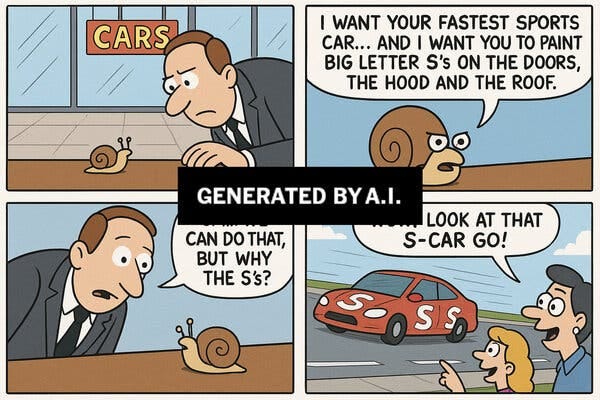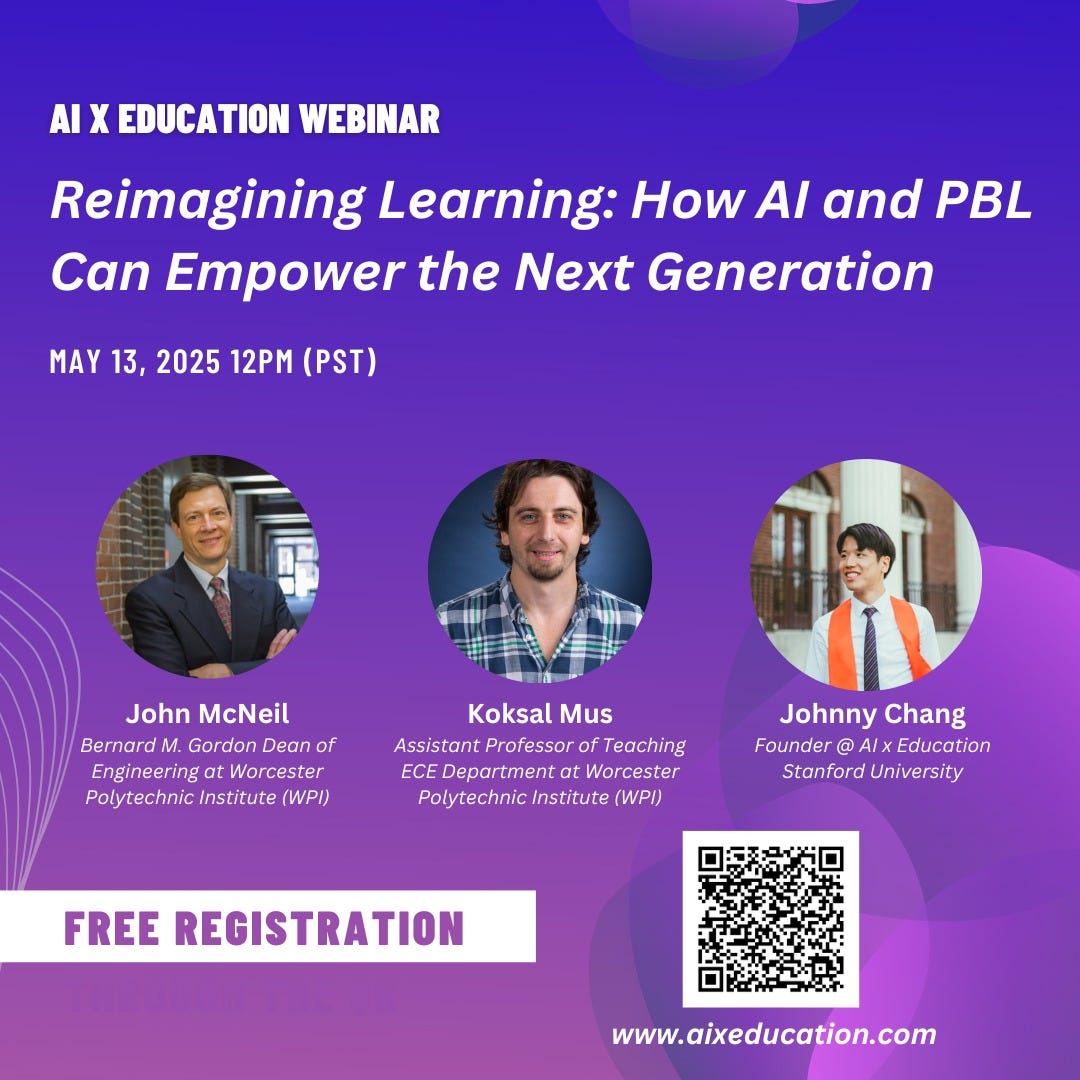On Wednesday, April 23rd, President Trump signed an executive order with the goal of advancing AI education for American youth. This initiative aims to create new educational and workforce development opportunities in AI to ensure America's continued global leadership in this rapidly evolving technological landscape.
The order details the creation of the White House Task Force on AI Education, which will be responsible for planning and implementing a Presidential AI Challenge. This challenge aims to encourage and showcase achievements in AI by students and educators, promote the widespread adoption of AI technology, and foster collaboration between government, academia, philanthropy, and industry to address national issues using AI. The order will also help to establish public-private partnerships to provide resources for AI education in K-12 schools, as well as explore additional initiatives to further advance AI education and prepare students for an AI-driven workforce.
The future of AI in classrooms is here and likely to stay. In this edition, we’ll explore various ways educators can integrate AI into their classrooms, along with some pitfalls and considerations to keep in mind.
Here is an overview of today’s newsletter:
Upcoming AI x Education Webinars Featuring PBL Learning
The Studio Ghibli Trend and the Rise of AI Image Generation
Pedagogical Biases in AI-Generated Lesson Plans
A Conversation with an Art Educator on the Impact of AI
🚀 Practical AI Usage and Policies
⭐️ Upcoming webinars from our AI x Education Webinar Series
The AI Assignment Playbook: Practical Strategies for Teaching with and about AI (May 7th at 12 pm PST)
With generative AI making its way into all manner of domains, educators have a role to play in teaching students how to use AI effectively and ethically, as well as when to avoid using it altogether. This can be hard to do when we're still figuring out what roles AI might usefully play in our teaching and scholarship!
In this session, you'll discover practical strategies for partnering with students in this AI revolution, not policing them, through thoughtfully designed activities across disciplines. Leave with concrete examples you can implement immediately, whether you teach literature, engineering, business, or anything in between.
Reimagining Learning: How AI and PBL Can Empower the Next Generation (May 13th at 12 pm PST)
Today’s students are not just preparing for careers. They are preparing to shape the future. As artificial intelligence begins to transform education, we are asking a big question: can AI elevate the human experience of learning rather than diminish it?
In this webinar, we explore how thoughtfully designed AI tools can strengthen Project-Based Learning in flipped classrooms. By personalizing instruction, deepening engagement, and helping students take ownership of their work, AI can support students in building confidence and purpose.
Join us to hear from John McNeill, Dean of WPI’s School of Engineering, Koksal Mus, Professor of Teaching in Electrical and Computer Engineering, and students from a groundbreaking course where AI and PBL came together. Together, they will share insights into what happens when students are empowered to lead their own learning journeys and discover what they are capable of.
This conversation is for anyone who believes that the future of education starts with helping students believe in themselves.
💡 Topic of the Week: AI Image Generation
Have you seen the Studio Ghibli trend on your social media feed lately? This famous Japanese animation style, featured in films like Spirited Away and My Neighbor Totoro, has recently been going viral. People are transforming their own photos into Studio Ghibli-style art using ChatGPT and sharing them all over social media.

In the past several weeks, OpenAI rolled out major updates to its GPT-4o model, enabling far more advanced image generation capabilities. Now, users can create much more hyperrealistic and high-quality visuals, including Ghibli-style art. The popularity of this feature has pushed ChatGPT usage to an all-time high, but it has also raised concerns about copyright infringement and artist consent. In fact, a resurfaced video clip from 2016 featuring Hayao Miyazaki, one of the founders of Studio Ghibli, has recently gone viral. In it, Miyazaki criticizes AI-generated animation, calling it “an insult to life itself.”

AI image generation comes with both exciting possibilities and important trade-offs to consider. Now, students no longer need years of experience to easily create illustrations, images, cartoons, and other visuals that enhance their projects and better communicate their ideas. However, it is also important to consider the data these models are trained on. Many AI systems learn from massive datasets that include copyrighted artwork or content scraped without permission, raising ethical questions around consent, credit, and fair use.

What are your thoughts on AI image generation? Let us know in the comments!
If you want to further explore this topic and discover potential applications of AI image generation in the classroom, check out this guide by Mark Anderson. It features practical prompts and ideas for using GPT-4o image generation tools to create infographics, visual vocabulary, and more!
👩💻 Helpful Resources for Educators
University Curriculum-Wide AI Programs - List of colleges and universities offering school-wide, department, or university-wide programs related to AI, created by Stefan Bauschard
GPT-4.1 Prompting Guide - Tips for prompt engineering shared by OpenAI
How AI Is Transforming Critical Thinking in Science Education - Blog article of Strategies, Tips, and Rationales of the usage of AI in Science Education created by the National Science Teaching Association (NSTA)
📖 Interesting Reads
Students Speak Out: AI Is Changing School, and No One's in Charge - Editorial in VKTR Highlighting Contrasting Student Views on AI
Ge Wang: GenAI Art Is the Least Imaginative Use of AI Imaginable - Interview with Associate Professor of Music and Associate Professor at Stanford University, GE Wang
How People Are Really Using Gen AI in 2025 - Article by Harvard Business Review

Source: Harvard Business Review
📝 Latest Research in AI + Education
Pedagogical Biases in AI-Powered Educational Tools: The Case of Lesson Plan Generators
Key Takeaways:
Based on their analysis of AI-generated lesson plans from commercial and general AI like MagicSchool and GPT-4, the researchers found that these AI-generated lesson plans often favor teacher-centered classrooms with limited classroom dialogue, emphasizing rote learning and instruction over deeper, student-driven discussion.
Intentional prompt engineering can reduce pedagogical biases in AI-generated lesson plans.
The authors highlight the importance of mindful engagement with AI tools by educators and collaboration with developers to embed educational values like student agency and dialogue.
Chen, B., Cheng, J., Wang, C., & Leung, V. (2025, April 2). Pedagogical Biases in AI-Powered Educational Tools: The Case of Lesson Plan Generators. https://doi.org/10.31219/osf.io/zqjw5_v1Bullshit universities: the future of automated education
Key Takeaways:
Education requires both "learning that" (facts) and "learning how" (skills), but a crucial limitation of AI in education is its inability to teach essential skills ("learning how") like critical thinking, writing, and constructing arguments, which require human guidance, practice, and feedback.
An important part of education also includes the social aspect, such as interaction with peers and teachers, gaining recognition, and more.
Teachers serve as essential role models, demonstrating commitment to disciplinary ideals (like honesty and intellectual rigor) and showing students why the material matters.
The authors suggest that instead of investing in AI, universities should invest in human teachers, smaller class sizes, and assessment methods like talking with students to foster independent thinking.
Sparrow, R., & Flenady, G. (2025). Bullshit universities: The future of automated education. AI & Society, 1–12. https://doi.org/10.1007/s00146-025-02340-8📰 In the News
USA Today
President Trump signs executive order boosting AI in K-12 schools ↗️
Key takeaways:
President Trump’s signing of the executive order on April 23 establishes a White House Task Force on AI Education, aimed at promoting public-private partnerships to enhance AI education resources in K–12 schools and developing a "Presidential AI Challenge" to encourage AI usage in the classroom.
This initiative reflects a bipartisan concern about American students potentially falling behind other nations in AI technology.
Trump's order also favors the application of AI in teacher training grants and encourages the National Science Foundation to prioritize research on AI in education, while the Secretary of Labor will expand AI-related apprenticeships.
ZDNET
AI agents arrive in US classrooms ↗️
Key Takeaways:
Kira is a new AI-native learning platform, backed by computer scientist Andrew Ng, that integrates AI into all educational workflows in K-12 education, from lesson planning to grading and tutoring.
The platform aims to free up teachers' time by automating repetitive tasks like lesson plan creation and grading, allowing them to focus on personalized student support. It also utilizes AI to personalize learning for individual learners while maintaining teacher control over pacing and curriculum.
Kira is currently being implemented in Tennessee schools through a partnership with the Tennessee STEM Innovation Network, specifically for computer science courses in middle and high school.
📣 Conversations on AI
Gayle Nicholls-Ali is an CAN/NAEA National teacher Leader and an AP Visual & Media Arts Educator. Previously, she served as an assistant teacher in the Visual Arts and Media Studies Department at Pasadena City College. She has also taught film and animation for the Pasadena Unified School District, as well as a photography and graphic design class for high school students. Recently, she developed an AI for Creatives: Practical Design Practice lesson plan for California Educators Together.
Q: What concerns do you have about AI as an educator?
I was recently at the National Arts Educators Association (NAEA) conference in Kentucky about two weeks ago. And every AI session was full to capacity. So obviously, there's a need for educators to understand the technology, specifically AI, and how it's going to affect their students, as well as how it impacts grading, which is also a growing topic of concern and conversation.
Pedagogy will need to adapt to AI, too, much like it had to with the rise of the internet. When the internet first emerged and was freely accessible, it didn’t look anything like it does now, right? Now, especially post-pandemic, children are using technology like they’re drinking water. It’s something that comes naturally to them because they’ve been immersed in it from such a young age.
So imagine you're a teacher, and the technology your students are exposed to at home is now something you have to understand, not just in terms of how they use it for education, but also how it shapes their attention. Because the reality is, this technology is exciting, right?
It's a screen that pops up, constantly moving, constantly engaging, something is always happening. It talks to you, responds to you. And then there’s me, trying to hold your attention through a lesson.
So I think what’s happening for a lot of educators, certainly something I experienced when I was in the classroom, is figuring out how to compete with that. How do I become as exciting as that phone?
Q: What is the current conversation within the art education community regarding AI?
At the conference, it was really interesting to see how educators are engaging with AI. Some are already using it, mostly graduate students in Ph.D. programs at some of the finest institutions in the country. They're inventing new ways for art education to evolve alongside AI so that it doesn’t suffer in the process.
One of the seminars I attended was on prompt engineering, specifically, having students create prompts to generate art with AI. So a student might say, "I want to create a dog with three heads and one tail."
Then the teacher would guide them to add more detail: “What color is the dog? How many eyes does it have? Two eyes on each head? Does it have whiskers? Is it furry or not? Does it look like a Dalmatian?”
All of these questions help the student think critically and creatively about their vision, and they have to keep refining the prompt to feed into the AI. After that, they would ask the AI to generate the image. Then the teacher would ask the student, “Is this picture what you were imagining?”
And the student would say, “Well, no,” so the teacher would respond, “Then go back in and see how you can make the prompt generate what you want.” Taking it a step further, she added, “Okay, now that you’ve got this result, let’s paint it or draw it.”
So the takeaway from this kind of exercise is that some students are really challenged with beginning a project. Some kids immediately pick up a pencil and start drawing, while other kids say they don’t know what to do, and they sit there and look around. AI can help those students kickstart their imagination. The act of having to prompt the machine, describing things like, “What color is it? How many eyes does it have? Are the eyes blue or green?”, gives them structure to spark creativity.
Q: What kind of skills do you think will be most important for future artists navigating a world with an increasing amount of AI use?
There's the creator, the students, who are the people who are going to be using it to create artwork. And I think that that is going to be something that a prompt generator may help with at the beginning of the process. I think it's going to be challenging for artists who are not using AI to compete with those who are AI artists. And as the technology gets better, it's going to be more difficult for non-AI artists to create work.
However, I will say that those non-AI artists who come up with original work, you're going to be able to see the difference. The AI work is going to be colder, less informed with emotion, feeling, and experience. And artists, we come with experience. We come with all of those things that make the art happen. So there's that part.
And then there are the curators and the people who write about art. They're going to be using AI to help them. AI is going to make it faster to facilitate how people talk about art, because it is an efficient thing.
And that’s a wrap for this week’s newsletter! If you enjoyed our newsletter and found it helpful, please consider sharing this free resource with your colleagues, educators, administrators, and more.







